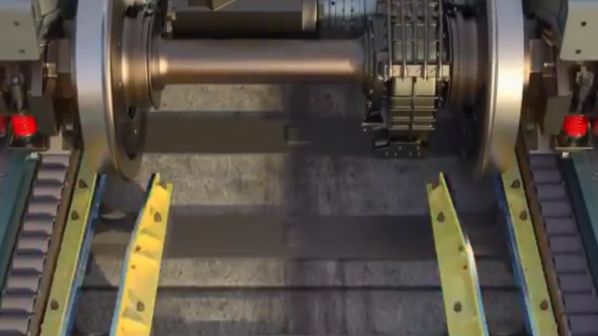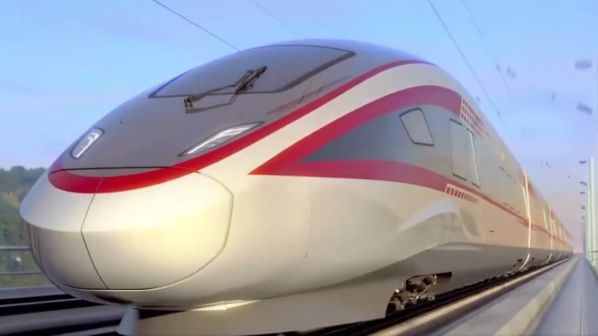The train is capable of operating at speeds of 400km/h, and has been developed to facilitate faster services on international routes.
“Regarding cross-border train travel, for instance from Beijing to Moscow, a train has to replace the bogie when it arrives at the border, which takes a relatively long time,” says Mr Wang Lei, a designer for CRRC Changchun. “We’ve now developed variable-gauge bogies to solve the problem.”
CRRC has also developed a gauge-changer track device to enable the bogies to switch between gauges.
At present, China’s rail network is 1435mm gauge, with around 79,685km of line. By contrast, neighbouring countries employ two main broad gauges, with 1520mm gauge in Russia, Mongolia, Kazakhstan and former Soviet countries; and 1676mm common in India, Pakistan and Bangladesh.
CRRC also says that the train can operate in temperatures between -50°C and 50°C, and can operate under range of different power supplies and rail standards.

Development of the train was revealed in July last year by Mr Yu Weiping, vice-president of CRRC at the Global Manufacturing Service Outsourcing Summit in Changchun, China, and is expected to be completed in time for the Beijing 2022 Winter Olympic Games.
The project was supported by a $US 5.2bn research grant from the Chinese government.
CRRC says that it is now ready to take orders for customised high-speed trains based on the prototype.

